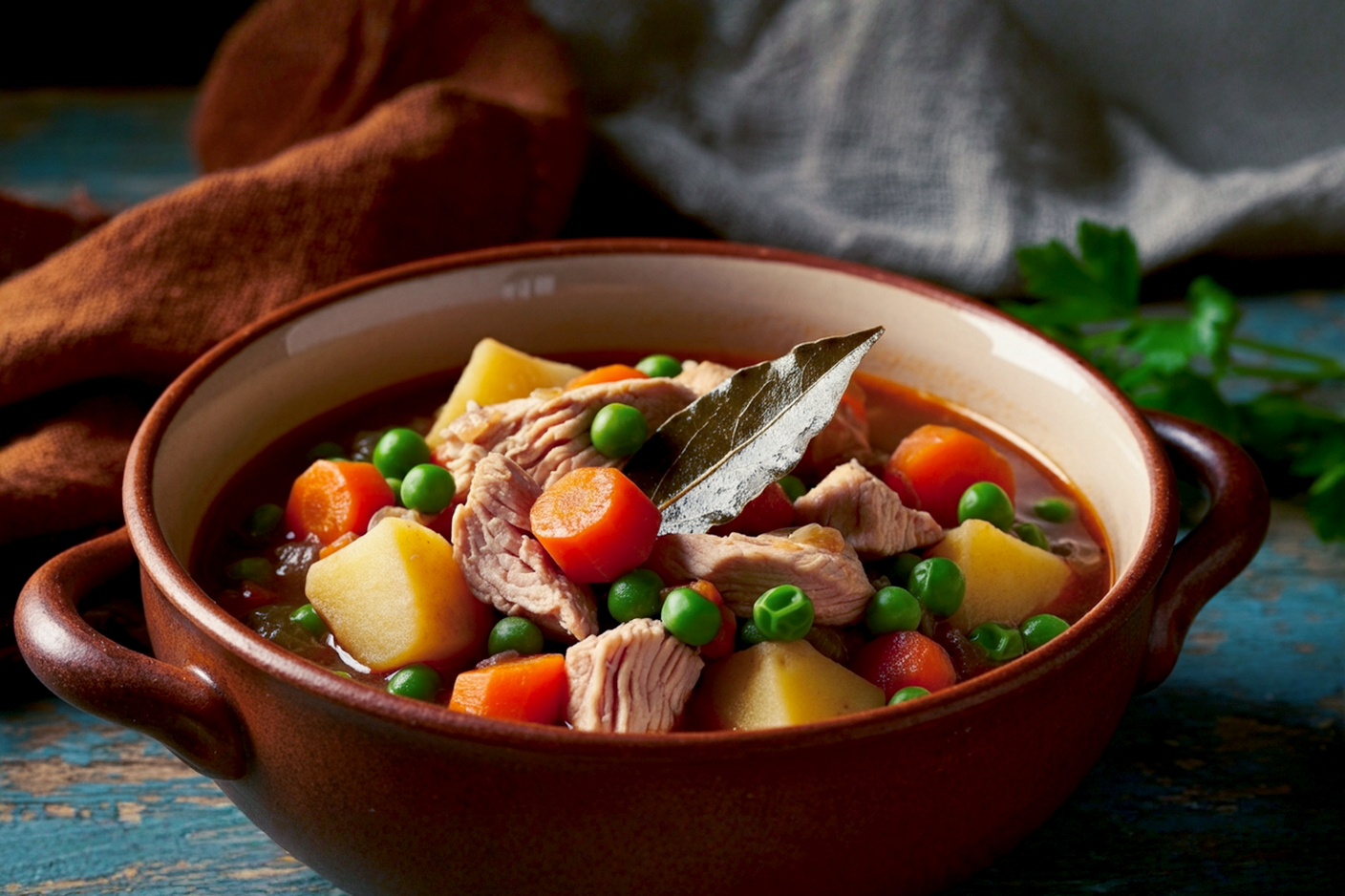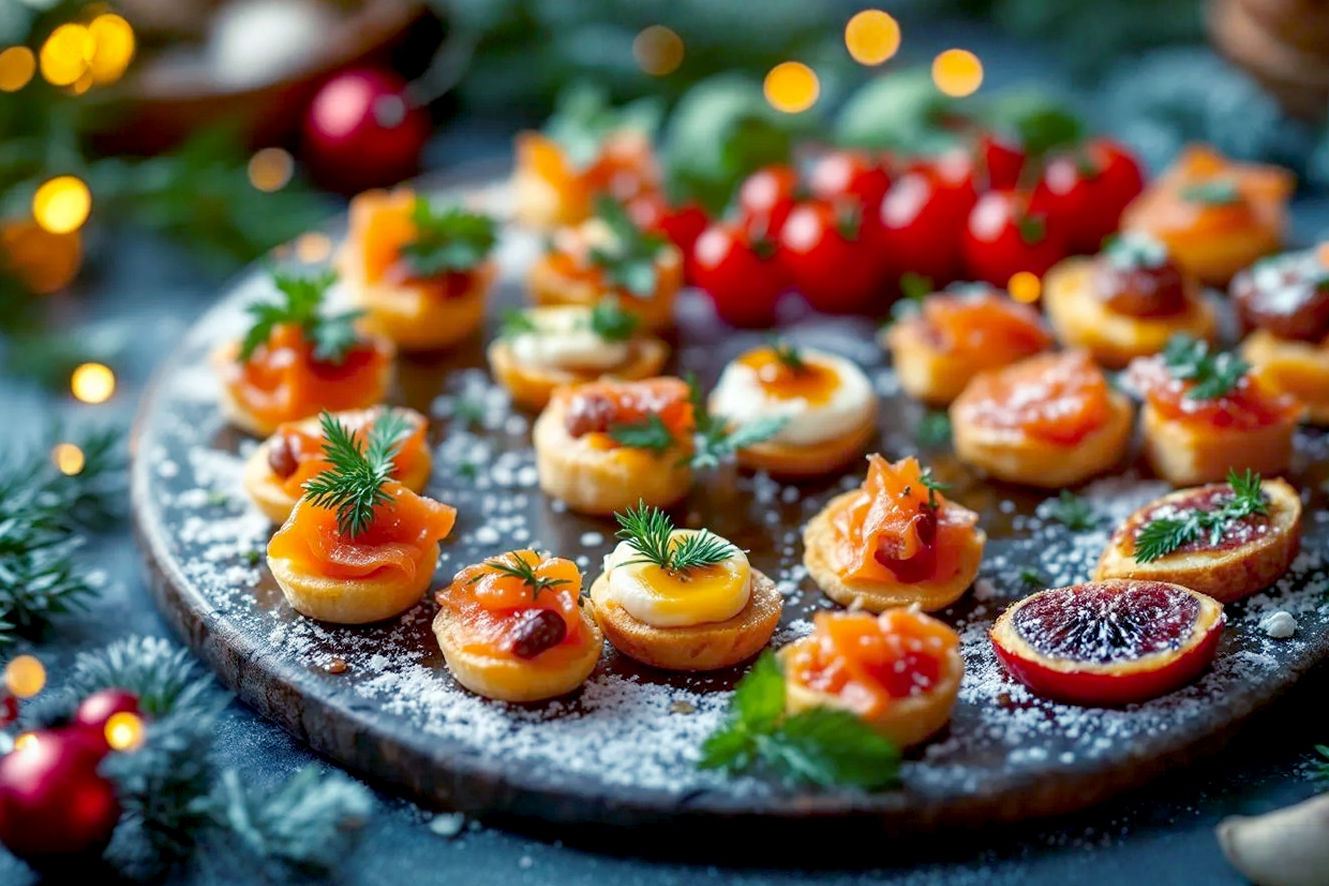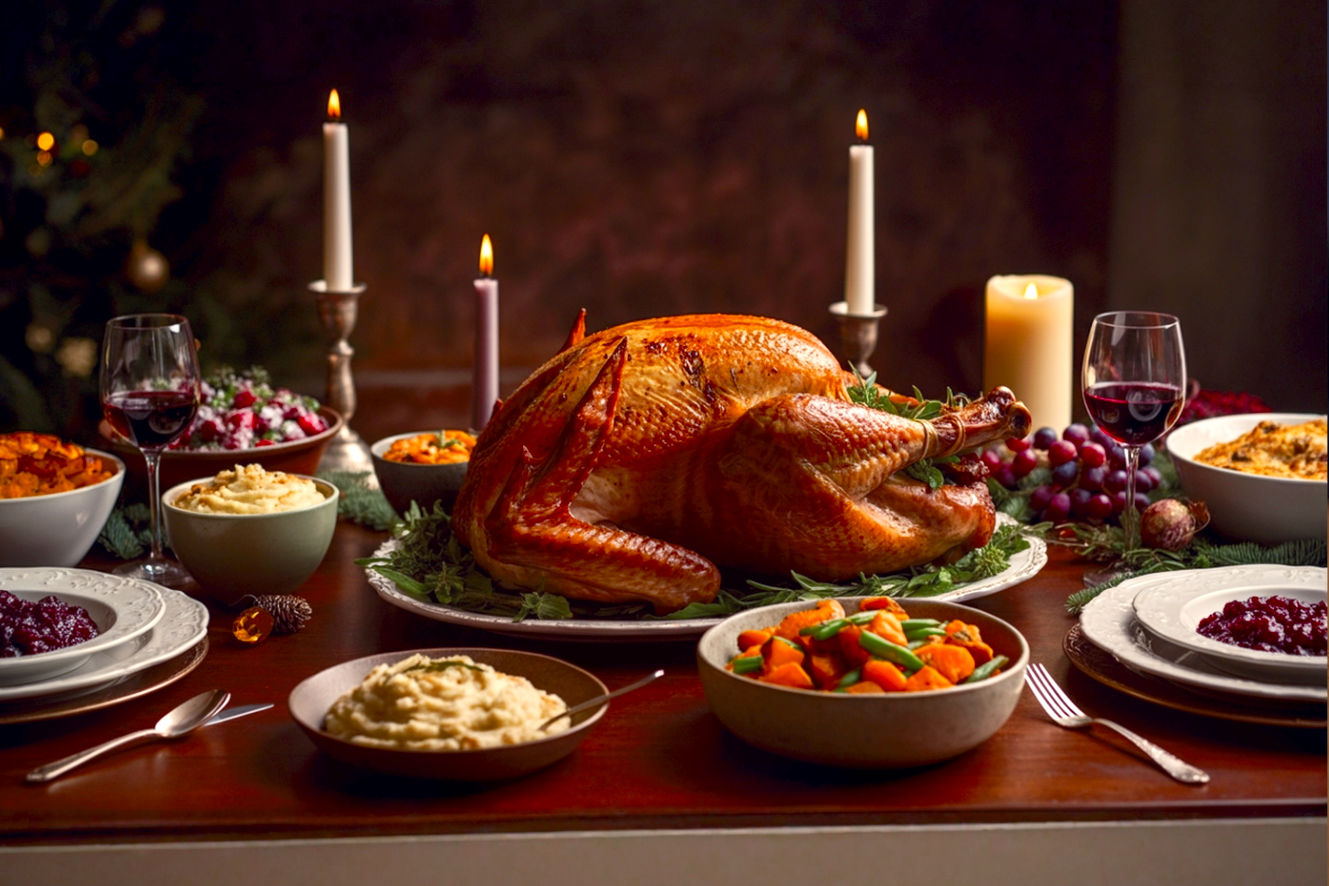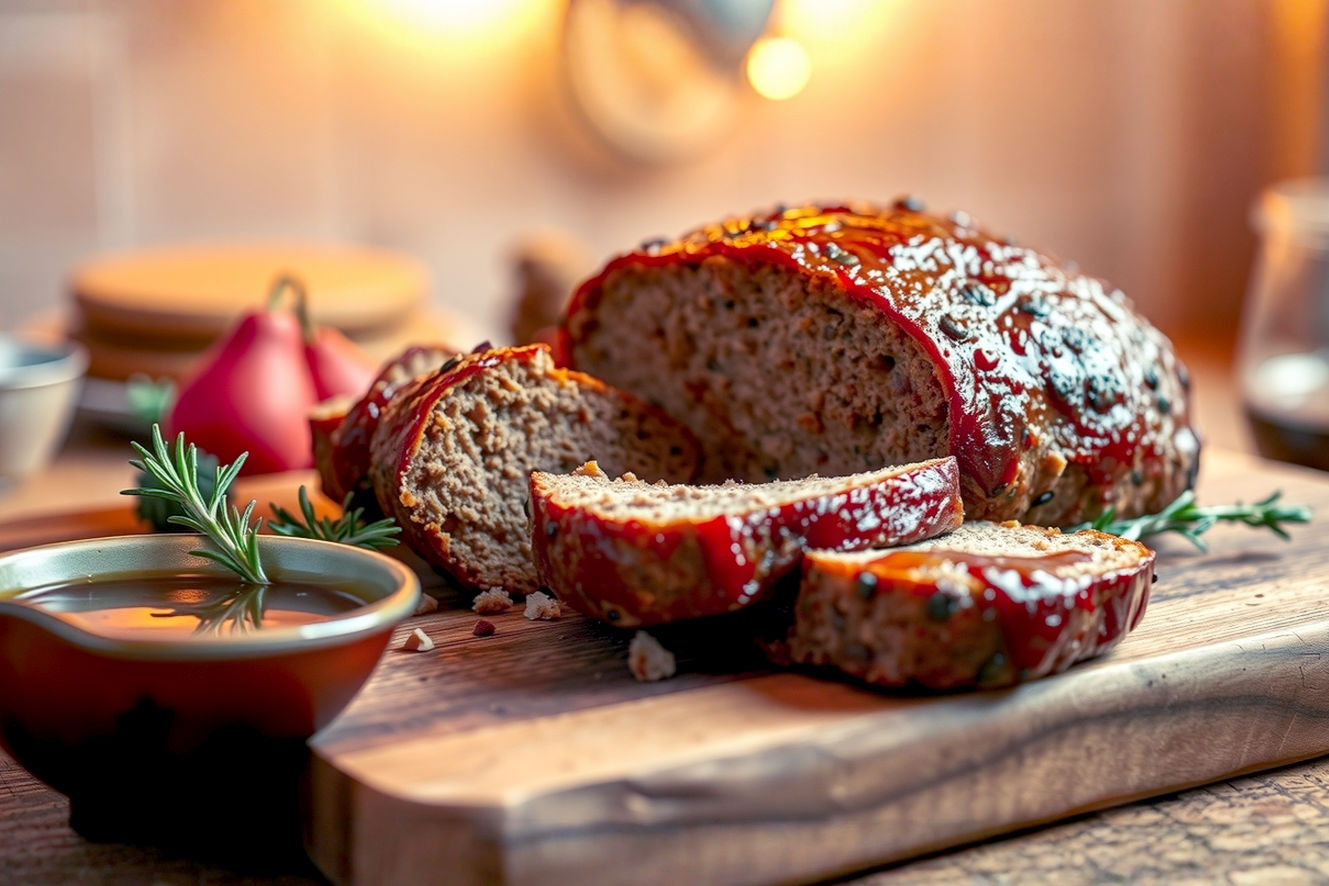This post may contain affiliate links. If you make a purchase through these links, we may earn a commission at no additional cost to you.
The holiday season brings a special kind of magic, and at the heart of many festive celebrations is a wonderful meal. Whether you’re gathering with family, hosting friends, or simply enjoying a quiet evening, the food we share creates lasting memories. This guide will explore a variety of holiday meal ideas, from timeless classics to exciting new options, helping you plan a feast that everyone will love. We’ll cover main courses, essential side dishes, and decadent desserts, offering tips to make your cooking experience enjoyable and stress-free. Get ready to discover the perfect festive celebration recipes for your next gathering!
The Heart of the Holiday Table: Classic Roasts
When we think of traditional holiday meals, a grand roast often comes to mind. These centerpieces are not just delicious; they also create a stunning visual focal point for your holiday table. They’re perfect for a Christmas dinner menu or a Thanksgiving meal idea.
Traditional Roasted Turkey
A traditional roasted turkey is arguably the most iconic dish for Thanksgiving and Christmas dinner in many households. Its sheer size and golden-brown skin make it a showstopper. But getting that perfect, juicy bird can seem daunting.
One popular technique is brining. This process involves soaking the turkey in a saltwater solution (often with herbs and spices) for several hours or even overnight. The salt helps the turkey absorb moisture, leading to a more tender and flavorful result. A wet brine submerges the turkey in liquid, while a dry brine involves rubbing salt and seasonings directly onto the turkey’s skin and letting it rest. Dry brining often results in crispier skin because there’s no excess moisture to evaporate. For a 12-pound turkey, you might use a wet brine of 1 cup salt per gallon of water, or a dry brine of 1 tablespoon of kosher salt per 4-5 pounds of turkey. The salt works through a process called osmosis, drawing moisture into the meat cells and breaking down some of the muscle proteins, which helps the meat hold onto more liquid during cooking.
Stuffing options are endless and truly personalize your turkey. Classic bread stuffing, made with stale bread cubes, herbs, and broth, is a beloved choice. Cornbread stuffing offers a slightly sweeter and crumblier texture, while fruit-based stuffings, incorporating apples or cranberries, add a delightful tang. Remember to stuff the turkey loosely, as the stuffing expands during cooking. For food safety, ensure the stuffing reaches an internal temperature of 165∘F (74∘C).
Finally, no roasted turkey is complete without a rich, savory gravy. This essential accompaniment is typically made from the pan drippings—the flavorful juices and fats that collect at the bottom of the roasting pan. After removing the turkey, you can deglaze the pan with broth or wine, then thicken the liquid with a roux (a mixture of fat and flour) to create a smooth, luscious gravy.
Succulent Roasted Ham
While turkey dominates Thanksgiving, a succulent roasted ham often takes center stage for Christmas and Easter celebrations. Hams are typically cured, meaning they’ve been preserved with salt, and often smoked, giving them a distinct flavor.
The key to a truly memorable ham is the glaze. Glazing techniques transform a simple ham into a sweet and savory masterpiece. A classic brown sugar glaze, often combined with mustard or spices like cloves, creates a caramelized crust. Maple glazes offer a rich, earthy sweetness, while pineapple glazes provide a bright, tangy counterpoint. The glaze is usually applied during the last hour or so of cooking, allowing it to caramelize without burning. The sugars in the glaze undergo a Maillard reaction, a complex chemical process between amino acids and reducing sugars that gives browned food its distinctive flavor.
When choosing a ham, you’ll encounter both bone-in and boneless considerations. Bone-in hams tend to be more flavorful and moist due to the bone marrow, but they are harder to carve. Boneless hams are convenient for carving and often come pre-sliced, making serving easier, though some argue they lack the depth of flavor of their bone-in counterparts. A typical serving size is about 1/2 pound (225 grams) per person for bone-in ham and 1/3 pound (150 grams) for boneless.
Elegant Prime Rib Roast
For a truly luxurious and impressive holiday meal, an elegant prime rib roast is an unbeatable choice. Also known as a standing rib roast, this cut of beef is known for its tenderness and rich flavor. It’s a fantastic option for a special festive celebration.
One of the best ways to cook prime rib is the reverse searing method. Unlike traditional roasting where you start high and finish low, reverse searing involves cooking the roast at a low temperature (around 250∘F or 120∘C) for a longer period until it reaches almost the desired internal temperature. Then, you finish it with a short blast of high heat (around 450∘F or 230∘C) to create a beautiful, crispy crust. This method ensures even cooking throughout the roast, minimizing the gray band often seen in traditionally roasted meats. The low temperature allows enzymes in the meat to tenderize it further, and the slow cooking prevents the outer layers from overcooking before the center is done.
To complement the rich flavor of prime rib, au jus (a natural gravy made from the pan drippings) is essential. Simply skim the fat from the drippings, then simmer with a bit of beef broth. A tangy horseradish cream sauce also provides a wonderful contrast, cutting through the richness of the meat. It’s typically made with freshly grated horseradish, sour cream, and a touch of vinegar or lemon juice.
Beyond the Bird: Alternative Main Courses
While classic roasts are wonderful, sometimes you want to offer something different or cater to varied tastes. These alternative holiday main courses are equally impressive and delicious.
Festive Roasted Duck with Cherry Glaze
A festive roasted duck with cherry glaze offers a sophisticated and flavorful alternative to more common holiday meats. Duck has a richer, darker meat than chicken or turkey, with a distinct flavor profile.
The key to a perfect roasted duck is rendering the fat for crispy skin. Duck skin is naturally fatty, and if not rendered properly, it can be rubbery. To achieve crispy skin, score the duck skin in a crosshatch pattern (without cutting into the meat), then roast it at a moderate temperature, allowing the fat to slowly melt and drain away. You can also prick the skin with a fork to help release the fat. This process, known as rendering, transforms the solid fat into liquid, which then drips away, leaving behind a thin, crispy layer of skin. The rendered duck fat is highly prized and can be saved for roasting potatoes or vegetables.
The sweet and savory flavor profiles of a cherry glaze perfectly complement the richness of the duck. A glaze typically involves simmering pitted cherries with sugar, vinegar (like balsamic or red wine vinegar), and sometimes a touch of orange zest or spices. The acidity from the vinegar helps balance the sweetness of the fruit and the richness of the duck.
Hearty Beef Wellington
For an undeniably impressive and rich holiday meal idea, Hearty Beef Wellington stands out. This dish features a tender beef tenderloin coated in pâté and duxelles (a mushroom mixture), all wrapped in puff pastry and baked until golden.
The preparation involves several layers. First, a beef tenderloin is seared to lock in juices. Then, it’s often coated with a thin layer of pâté (a rich, savory spread, often made from liver, though vegetarian versions exist). The pâté adds an extra layer of flavor and helps create a barrier between the beef and the pastry. Next comes the duxelles preparation. Duxelles is a finely chopped mixture of mushrooms (often cremini or button), shallots, and herbs, sautéed until all the moisture evaporates. This concentrated mushroom mixture provides a deep, earthy umami flavor. The mushrooms are cooked down until they release their water, intensifying their flavor and ensuring the puff pastry doesn’t become soggy.
Finally, the beef, pâté, and duxelles are encased in puff pastry. This buttery, flaky pastry is crucial for the dish’s appeal. When baking, the layers of butter and dough in the puff pastry create steam, causing the pastry to puff up and become incredibly light and airy. Achieving a perfectly golden and crisp pastry requires careful temperature control and sometimes an egg wash for a glossy finish.
Seafood Extravaganza (e.g., Baked Salmon or Scallops)
For those seeking a lighter, yet equally elegant option for holiday gatherings, a seafood extravaganza can be perfect. Dishes like baked salmon or seared scallops offer a refreshing change from heavier meats.
Lemon-herb baked salmon is a simple yet sophisticated choice. Salmon fillets are seasoned with fresh herbs (dill, parsley, thyme), lemon slices, and a drizzle of olive oil, then baked until flaky. Salmon is rich in omega-3 fatty acids, making it a healthy and flavorful option. The gentle baking method helps keep the fish moist and tender.
Seared scallops with white wine sauce are another fantastic option. Scallops cook quickly and develop a beautiful caramelized crust when seared properly. The key is to pat them very dry before searing in a hot pan with a little oil or butter. The white wine sauce is typically made by deglazing the pan with white wine, then adding butter, lemon juice, and herbs. Scallops have a naturally sweet, delicate flavor that pairs wonderfully with bright, acidic sauces. The Maillard reaction, which browns the surface of the scallops, creates hundreds of new flavor compounds, enhancing their natural sweetness.
The focus for any seafood dish should always be on fresh, quality ingredients. Fresh seafood has a clean, mild smell and firm texture.
Vegetarian and Plant-Based Holiday Delights
As dietary preferences evolve, offering vegetarian holiday options is becoming increasingly important. These plant-based dishes are not just alternatives; they are flavorful and satisfying main courses in their own right, perfect for any festive celebration.
Savory Mushroom and Lentil Loaf
A savory mushroom and lentil loaf is a robust and hearty vegetarian holiday option that can easily stand in for a traditional meatloaf. It’s packed with umami flavors and offers a satisfying, meaty texture without any meat.
This loaf typically combines cooked lentils (which provide protein and bulk) with sautéed mushrooms (like cremini or shiitake), onions, garlic, and herbs. The mushrooms, especially when well-browned, contribute a deep, savory flavor often described as umami—the fifth basic taste, characterized by a rich, savory, and meaty sensation. Binding agents like breadcrumbs or flax eggs help hold the loaf together.
For an extra layer of flavor and visual appeal, consider different glaze ideas. A balsamic glaze, made by reducing balsamic vinegar until it’s thick and syrupy, adds a tangy sweetness. A simple tomato-based glaze, similar to what you’d use on a meatloaf, also works well, providing a familiar and comforting taste. The glaze not only adds flavor but also helps to keep the loaf moist during baking and provides a beautiful finish.
Stuffed Butternut Squash with Cranberry and Pecan
Stuffed butternut squash with cranberry and pecan is a visually appealing and incredibly flavorful vegetarian dish. It’s particularly great for individual servings, making it an elegant choice for a holiday dinner.
Butternut squash has a naturally sweet, nutty flavor that pairs wonderfully with both sweet and savory combinations. The squash halves are typically roasted until tender, then filled with a mixture that often includes wild rice or quinoa, dried cranberries, toasted pecans, fresh herbs, and sometimes a touch of cheese or maple syrup. The sweetness of the squash and cranberries contrasts beautifully with the savory grains and earthy pecans.
This dish is not only delicious but also quite versatile. You can adapt the stuffing to include other ingredients like spinach, goat cheese, or different nuts. The vibrant colors of the squash, cranberries, and green herbs make it a beautiful addition to any holiday meal idea.
Essential Side Dishes to Complete Your Feast
While the main course often gets the spotlight, holiday side dishes are truly what complete a festive feast. They add variety, texture, and a comforting familiarity that makes the meal feel special.
Creamy Mashed Potatoes
Creamy mashed potatoes are the ultimate comfort food and an indispensable part of almost any holiday spread. Achieving that perfect, fluffy texture is key.
The best potatoes for mashing are starchy varieties like Russet or Idaho potatoes. These potatoes break down easily when cooked, resulting in a light and airy mash. Waxy potatoes, like Yukon Gold, can be used for a creamier, denser mash, but they tend to be gummier if over-mashed. After boiling the potatoes until tender, drain them thoroughly. The secret to fluffiness is to mash them while they are still hot, incorporating warm milk or cream and plenty of butter. Using warm liquids helps the potatoes absorb them better without cooling down the mixture too much, which can lead to a gluey texture. The starch granules in the potato swell when heated; mashing them while hot prevents them from releasing too much starch, which contributes to gumminess.
You can elevate your mashed potatoes with various flavor additions. Garlic mashed potatoes are a popular choice, made by roasting garlic cloves until soft and sweet, then mashing them into the potatoes. Chives add a fresh, oniony note, while roasted garlic variations provide a deeper, more mellow garlic flavor.
Green Bean Casserole (Homemade vs. Canned)
Green bean casserole is a classic Thanksgiving side dish, evoking nostalgia for many. While the traditional version often relies on canned ingredients, using fresh ingredients can create an elevated version.
The classic recipe typically uses canned green beans, canned cream of mushroom soup, and store-bought crispy fried onions. It’s quick and easy, which makes it a popular choice. However, for an elevated version, consider using fresh or frozen green beans, a homemade cream of mushroom sauce (made with fresh mushrooms, broth, and cream or milk), and homemade crispy fried onions. Making your own sauce allows you to control the seasoning and avoid the artificial flavors often found in canned soups.
Crispy fried onions are a crucial component, providing a delightful crunch and savory flavor. While store-bought options are convenient, making them at home involves thinly slicing onions, coating them in flour, and deep-frying until golden brown and crispy. This extra step truly makes a difference in the overall texture and taste of the casserole.
Sweet Potato Casserole with Pecan Topping
Sweet potato casserole with pecan topping offers a wonderful balance of sweet and savory flavors, making it a beloved holiday side dish.
The base of the casserole is a creamy sweet potato puree, often flavored with brown sugar, butter, and warm spices like cinnamon and nutmeg. Some recipes also include a touch of orange juice or zest for brightness. The debate often centers on the topping: marshmallow vs. pecan streusel topping. A marshmallow topping creates a gooey, caramelized layer, while a pecan streusel topping (made with chopped pecans, brown sugar, flour, and butter) provides a delightful crunch and nutty flavor. Both are delicious, so the choice often comes down to personal preference. Sweet potatoes are rich in beta-carotene, which gives them their vibrant orange color and converts to Vitamin A in the body.
Cranberry Sauce (Homemade vs. Canned)
Cranberry sauce provides a bright, tart counterpoint to the rich and savory dishes on a holiday table. While canned cranberry sauce is convenient, homemade cranberry sauce offers a fresher, more vibrant flavor.
Making it from scratch is surprisingly simple. You’ll need fresh or frozen cranberries, sugar, and water or orange juice. Simmering these ingredients together causes the cranberries to burst, releasing their pectin and thickening the sauce naturally. The natural acidity and tannins in cranberries provide a palate-cleansing effect, which is why they pair so well with rich meats.
You can easily customize homemade cranberry sauce by adding orange zest for a citrusy note, or spices like cinnamon sticks, cloves, or star anise for a warm, aromatic flavor. Some people even add a splash of port wine or Grand Marnier for an adult twist.
Roasted Brussels Sprouts with Balsamic Glaze
Roasted Brussels sprouts with balsamic glaze have become a modern, popular holiday side dish, even converting many who previously disliked them. The key is achieving that perfect crispy texture.
When roasted at a high temperature, Brussels sprouts caramelize and become tender on the inside with wonderfully crispy outer leaves. To achieve this, toss them with olive oil, salt, and pepper, then roast them in a single layer on a baking sheet. Overcrowding the pan will steam them instead of roasting them, preventing crispiness. The high heat causes the sugars in the sprouts to caramelize through the Maillard reaction, developing a deeper, sweeter flavor and a desirable texture.
A drizzle of balsamic glaze (reduced balsamic vinegar) adds a tangy, sweet finish that complements the slight bitterness of the sprouts. You can also enhance them with bacon bits, toasted nuts (like pecans or walnuts), or a sprinkle of Parmesan cheese for extra flavor and texture.
Decadent Holiday Desserts
No holiday meal is complete without a selection of decadent holiday desserts. These sweet treats provide a perfect ending to a festive feast and are often eagerly anticipated.
Classic Pumpkin Pie
Classic pumpkin pie is a quintessential autumn and holiday dessert, especially for Thanksgiving. Its creamy filling and warm spices are synonymous with the season.
The filling typically consists of pumpkin puree, eggs, evaporated milk or cream, and a blend of spices such as cinnamon, nutmeg, ginger, and cloves. These spices create the characteristic “pumpkin pie spice” flavor. The eggs act as a binding agent and help the filling set, while the dairy provides richness and creaminess. For a smooth filling, ensure the pumpkin puree is well-blended and free of lumps.
Perfect crust techniques are crucial for a great pumpkin pie. A flaky, buttery pie crust provides a wonderful contrast to the smooth filling. Blind baking (pre-baking) the crust before adding the filling can help prevent a soggy bottom, especially important for custard-based pies. This involves lining the pie crust with parchment paper, filling it with pie weights or dried beans, and baking it for a short period before adding the filling.
Apple Crumble or Pie
A warm, comforting apple crumble or pie is a versatile dessert that appeals to almost everyone. It’s a fantastic choice for any festive celebration.
The choice of different apple varieties is important for the best results. A mix of sweet and tart apples, such as Granny Smith (for tartness and structure), Honeycrisp (for sweetness and crispness), and Fuji or Gala (for balanced flavor), often yields the most complex and delicious pie. The apples should be firm enough to hold their shape during baking but tender when cooked.
You can opt for a streusel topping (for an apple crumble) or a double crust (for an apple pie). A streusel topping is a crumbly mixture of flour, sugar, butter, and sometimes oats or nuts, which creates a delightful textural contrast. A double crust pie encases the apple filling entirely in pastry, offering a more traditional look and feel. Both versions are delicious, especially when served warm with a scoop of vanilla ice cream or a dollop of whipped cream.
Yule Log (Bûche de Noël)
The Yule Log, or Bûche de Noël, is an impressive and traditional Christmas dessert, particularly popular in France. It’s a festive centerpiece that looks like a log from a winter forest.
This dessert is essentially a sponge cake (often a genoise or joconde sponge) baked in a thin sheet, then rolled up with a creamy filling. The cake needs to be flexible enough to roll without cracking, which is achieved by baking it quickly and rolling it while still warm. The filling is typically a rich buttercream (like a chocolate buttercream or mocha buttercream), but it can also be a ganache or fruit curd. The cake is then unrolled, filled, re-rolled, and covered with more buttercream, which is often textured with a fork to resemble tree bark.
Decorative elements are what truly bring the Yule Log to life. Edible mushrooms (made from meringue or marzipan), holly leaves, berries, and a dusting of powdered sugar (to mimic snow) are common additions. The visual appeal of the Yule Log makes it a showstopping dessert for any Christmas dinner menu.
Planning and Preparation Tips for Stress-Free Holidays
Hosting a holiday meal can feel overwhelming, but with proper planning and preparation, it can be a joyful and stress-free experience. These tips will help you manage your time and tasks effectively for your holiday meal ideas.
Make-Ahead Holiday Food Strategies
One of the best ways to reduce stress is to utilize make-ahead holiday food strategies. Many dishes can be prepped or even fully cooked days in advance, freeing up your time on the actual celebration day.
Consider dishes that hold up well or even improve in flavor after a day or two. For example, cranberry sauce can be made a week in advance. Many casseroles, like green bean casserole or sweet potato casserole, can be assembled the day before and baked just before serving. Gravy can be made ahead using turkey or chicken stock, then simply reheated and whisked with pan drippings on the day of the feast. Even some desserts, like pies (without whipped cream) or cheesecakes, can be prepared a day or two ahead.
For freezing and reheating tips, ensure food is cooled completely before freezing to prevent ice crystals. Label everything clearly with the dish name and date. When reheating, thaw frozen dishes in the refrigerator overnight. Reheat casseroles in the oven at a moderate temperature (350∘F or 175∘C) until heated through. Gravy and sauces can be reheated gently on the stovetop, whisking frequently.
Creating a Timeline and Shopping List
A detailed timeline and shopping list are your best friends for avoiding last-minute rushes and forgotten ingredients.
Start by creating your menu well in advance. Then, break down each dish into its individual components and tasks. Assign specific days for shopping, prep work (chopping vegetables, making sauces), and cooking. For instance, you might decide to shop for non-perishables two weeks out, fresh produce and meat a few days before, and then dedicate the day before to chopping and assembling. A timeline helps you visualize the flow of tasks and ensures you don’t try to do too much at once.
Your shopping list should be organized by grocery store section (produce, dairy, meat, pantry) to make your trip efficient. Double-check your pantry for staples you might already have. This systematic approach helps you avoid those frantic dashes to the store on the morning of your festive celebration.
Dietary Considerations and Substitutions
With guests often having diverse needs, addressing dietary considerations and substitutions is a thoughtful way to ensure everyone can enjoy the holiday meal.
Common dietary needs include gluten-free, dairy-free, vegetarian, and vegan options. For gluten-free guests, ensure your stuffing is made with gluten-free bread, or offer a naturally gluten-free side like roasted vegetables or mashed potatoes (made without gluten-containing thickeners). For dairy-free needs, use plant-based milks and butters in mashed potatoes or casseroles. Many vegetarian dishes, like the mushroom and lentil loaf or stuffed squash, can be adapted to be vegan by omitting cheese or using plant-based alternatives.
Easy substitutions for common ingredients can make a big difference. For example, vegetable broth can often replace chicken or beef broth. Coconut oil or olive oil can substitute butter in many savory dishes. Almond flour or gluten-free all-purpose flour blends can be used in baking. Always communicate with your guests about their dietary needs in advance, and clearly label dishes on your buffet to avoid confusion. This inclusivity makes everyone feel welcome and valued at your holiday gathering.
Conclusion
Creating a memorable holiday meal is about more than just the food; it’s about the joy of togetherness and the memories you forge around the table. From the comforting familiarity of a traditional roasted turkey to the elegant sophistication of a beef Wellington, and the vibrant flavors of vegetarian holiday options, there’s a world of holiday meal ideas waiting to be explored.
We’ve journeyed through classic roasts, exciting alternative main courses, delightful plant-based dishes, and the essential side dishes that complete any feast. We also indulged in decadent desserts and shared practical tips for stress-free planning. Whether you’re a seasoned host or new to holiday cooking, remember that the most important ingredient is love. So, embrace the festive spirit, experiment with these festive celebration recipes, and savor every moment. Happy holidays, and happy cooking!






